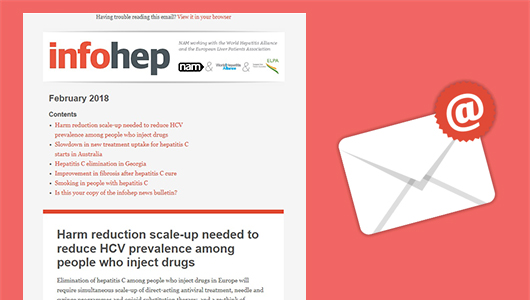
Graph from the infographic published alongside the report.
In a report issued on 3 December, the EASL-Lancet Liver Commission said a paradigm shift is needed in the liver response in Europe to tackle the second-biggest cause of years of working life lost in Europe.
The medical profession needs to change its approach to liver disease: instead of focusing on the management of end-stage complications, it needs to shift towards prevention, proactive case-finding, with early identification of progressive liver fibrosis, early diagnosis and early treatment, the EASL-Lancet Liver Commission said in a press statement.
As well as emphasising the importance of screening for liver disease, prevention and early treatment of viral hepatitis, the report also recommends the adoption of consistent public health policies across Europe designed to reduce the consumption of alcohol, high-fat and high-sugar foods, to combat alcoholic and non-alcoholic fatty liver disease.
Key recommendations of the EASL-Lancet Liver Commission:
- Implementation of standardised and simplified liver blood tests for earlier detection and prompt care.
- Utilisation of opportunities created by the hepatitis B and C drugs as well as hepatitis B and A vaccines to achieve viral hepatitis elimination in Europe.
- Increase awareness and provide financial incentives for primary care peers and professionals.
- Non-viral liver diseases must be classified along with other non-communicable diseases to engage appropriate care models.
- All forms and sources of stigma towards people at risk of or with liver disease must be opposed – relevant changes to the medical nomenclature should come first.
- Public disclosure of prices for antiviral drugs throughout Europe would reinforce the WHO/World Health Assembly resolution to improve fairness of market prices.
- European governments must introduce uniform policies to reduce the harmful use of alcohol.
- A complete social and digital media ban on the marketing of alcohol and ultra-processed, high-fat and high-sugar foods targeted to children.
- Promote industry-led food reformulation and minimisation of social inequities by subsidising healthy foods.
- EU and European governments should prioritise the harmonisation of critical forms of public health interventions and health-related policies across Europe.





Connect with infohep on Facebook: Keep up to date with all the latest news and developments.
Follow infohep on Twitter for links to news stories and updates from infohep.org. Follow us at www.twitter.com/infohep.
Follow all the infohep news by subscribing to our RSS feeds.